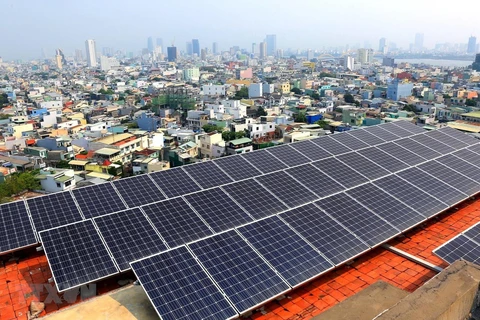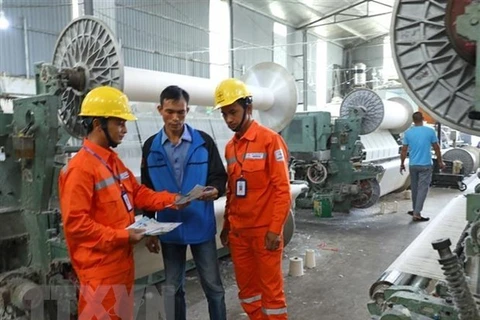Hanoi (VNS/VNA) - Vietnam’s electricity supplier say they are confident they have the power to supply the whole country next year.
Unless there are any extremely unusual problems at hydro plants, Vietnam Electricity (EVN) believe they will be able to provide electricity for 2021.
The remaining months of the year may be affected as the country deals with the COVID-19 pandemic, particularly in construction and commercial industries.
But as the country gets back on its feed, EVN forecasts power demand will also increase.
To ensure sufficient power supply in 2021, EVN has plans in place to cope with extra demand.
In the eight months this year, the national electric system has been safely and stably operating to ensure power supply in the context of complicated development of the pandemic.
However demand grew lower than expected. The total electricity production of the whole system has reached 163.4 billion kWh, up 1.6 percent compared to same period in 2019.
The power use by industry and construction sectors only increased by 0.72 percent over the same period in 2019 while electricity supplied for commercial services has decreased by 11.75 per cent over the same period.
The reason was that the sectors had been affected since the pandemic began.
Domestic use had been still increasing by 6.54 per cent, mainly due to prolonged hot weather spells.
EVN said that in the last months this year, the impact of the COVID-19 pandemic will still affect electricity use, especially for the industrial, construction and commercial service sectors.
It expects that the commercial electricity output for the whole 2020 will be about 214.3 billion kWh, an increase of 2.16 percent against last year.
Regarding the exploiting and operating of hydro-power reservoirs, with the current situation of low water flow to hydropower reservoirs this year’s flood season, the water storage has been facing many difficulties, especially the reservoirs in the Central Highlands and southern provinces.
By the end of this year, total hydroelectricity output is estimated at 69.12 billion kWh, seven billion kWh lower than the annual plan./.
Unless there are any extremely unusual problems at hydro plants, Vietnam Electricity (EVN) believe they will be able to provide electricity for 2021.
The remaining months of the year may be affected as the country deals with the COVID-19 pandemic, particularly in construction and commercial industries.
But as the country gets back on its feed, EVN forecasts power demand will also increase.
To ensure sufficient power supply in 2021, EVN has plans in place to cope with extra demand.
In the eight months this year, the national electric system has been safely and stably operating to ensure power supply in the context of complicated development of the pandemic.
However demand grew lower than expected. The total electricity production of the whole system has reached 163.4 billion kWh, up 1.6 percent compared to same period in 2019.
The power use by industry and construction sectors only increased by 0.72 percent over the same period in 2019 while electricity supplied for commercial services has decreased by 11.75 per cent over the same period.
The reason was that the sectors had been affected since the pandemic began.
Domestic use had been still increasing by 6.54 per cent, mainly due to prolonged hot weather spells.
EVN said that in the last months this year, the impact of the COVID-19 pandemic will still affect electricity use, especially for the industrial, construction and commercial service sectors.
It expects that the commercial electricity output for the whole 2020 will be about 214.3 billion kWh, an increase of 2.16 percent against last year.
Regarding the exploiting and operating of hydro-power reservoirs, with the current situation of low water flow to hydropower reservoirs this year’s flood season, the water storage has been facing many difficulties, especially the reservoirs in the Central Highlands and southern provinces.
By the end of this year, total hydroelectricity output is estimated at 69.12 billion kWh, seven billion kWh lower than the annual plan./.
VNA
























